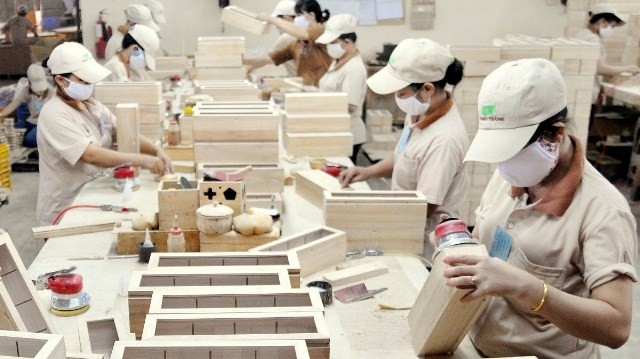According to Vice President and General Secretary of VIFORES Nguyen Ton Quyen, the strong growth of wood export was seen in traditional and key markets such as the US, Japan, the EU, the Republic of Korea (ROK) and China. The value of exports to the five markets makes up nearly 90% of the total export turnover of Vietnamese wood and timber products.
In the first half of this year, wood and wood product exports reached US$3.57 billion, which is up 13.6% from US$3.14 billion for the same period in 2016. By the end of September 2017, export value was estimated at US$5.51 billion, up 10.6% year on year.
On average, in the first nine months this year, monthly export turnover reached US$700 million per month. Meanwhile, the "export season" for wood usually falls on the last three months of the year. For that reason, according to the VIFORES General Secretary, the target of US$8 billion this year is entirely possible with the current momentum.
However, there will be changes in policies from the ROK and Japan to tighten the management of imported wood products, Quyen said, adding that this will directly impact Vietnam’s exports to the markets.
Apart from domestic wood, Vietnam imports a large amount of wood material worth US$1.7-1.8 billion annually, equivalent to about 20-30% of the export turnover.
In May 2017, after the six-year negotiation process, Vietnam signed the Vietnam-EU Voluntary Partnership Agreement (VPA) on the EU Forest Law Enforcement, Governance and Trade (FLEGT).
Quyen said the implementation of this agreement in Vietnam would ensure all wood products represented in the list agreed by the Vietnamese government and the EU, including domestic and imported ones, are legal.
The signing of the document is important as it could create fundamental changes for Vietnam’s wood processing sector as well as domestic and export markets, including nations supplying wood material for Vietnam and countries buying wood and timber products from Vietnam, he added.
In order to prepare for the wood industry to meet the needs and conditions of important traditional export markets in the future, To Xuan Phuc, from Forest Trends Organisation, suggested that it is important to eliminate the high-risk source of raw material timber originating from imports, replacing by sources of clean domestic wood.
According to Nguyen Van Ha, Deputy Head of the General Directorate of Forestry, not only for VPA/FLEGT, Vietnam also must have legal timber that has become the general trend around the world. Businesses have also identified wood origin as an important issue in timber production and processing.
In addition, Vietnam has joined the Convention on International Trade in Endangered Species of Wild Fauna and Flora. Therefore, Vietnam must be committed to the protection of wild and rare animals and plants in order to maintain sustainable development.
To make it easier for domestic origin to be legally ensured, Vo Dinh Tuyen from the Department of Sectoral Economics - the Government Office, said that it is important to link the processing plants to the raw material areas, thus helping the wood processing sector develop sustainably.
Tran Thi Thuy Hoa, Head of the rubber development consultancy under the Vietnam Rubber Association, said that rubber wood is considered one of the major sources of legal wood processing in Vietnam. Rubber wood has been a type of savior product for the Vietnamese rubber industry in recent years when rubber latex was at considerable low point.
















